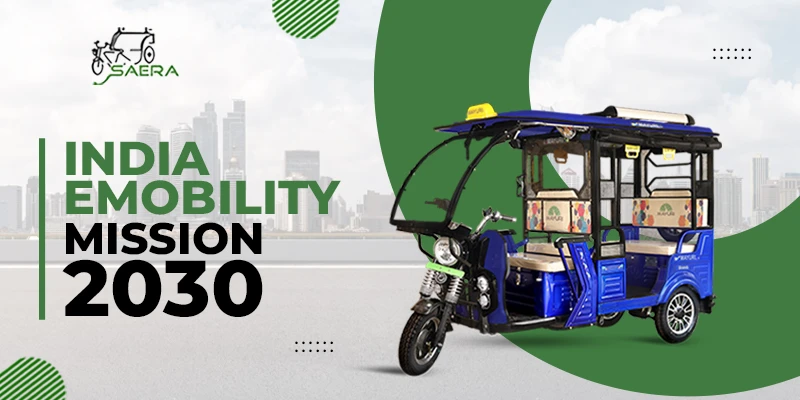India is all prepared with its ambitious target for reducing carbon emissions and transitioning towards a cleaner and more sustainable future. The country’s mobility mission, which aims to achieve 100% electric vehicles on its road by 2030, is a crucial step towards realising this vision.
Revolution of Transportation in India
The national electric mobility mission plan 2030 was developed with the aim of reducing India’s reliance on fossil fuels, boosting energy security, and improving citizens’ overall quality of life. The government has taken many steps to boost EV adoption, including incentives for battery-operated vehicle manufacturers, customer subsidies, and the installation of charging infrastructure.
The Faster Adoption and Manufacture of Hybrid and Electric Vehicles (FAME) scheme is one of the mission’s core efforts. Established in 2015, the plan gives financial incentives to producers and consumers of EVs and hybrid cars. The plan has been extended multiple times and is now in its second phase, with a budget of more than Rs 10,000 crore (about $1.3 billion). Many additional steps have been taken by the government to boost the adoption of the EV. For example, the goods and services tax(GST) on EVs has been reduced from 12% to 5%, making them more affordable to customers. In some states, it has also exempted EVs from paying road tax and registration fees.
The government is also focusing on establishing the e-mobility infrastructure required to enable EVs. This involves establishing charge stations nationwide, enacting rules encouraging private enterprises to invest in charging infrastructure, and employing the best e-rickshaw loader in India. In addition, the government has created the National Electric Mobility Mission Plan (NEMMP) to encourage the development and manufacture of EVs in the country.
Suggest Read: Future of Electric Three-wheelers in India
Challenges on the Route to EV
The rapidly growing EV market in India has seen a surge in EV sales by more than 20% annually. However, many obstacles still need to be addressed to achieve the ambitious target of 100% EVs by 2030.
One of the most significant issues is the high cost of EVs, which can be exorbitant for many users. The government is addressing this by offering incentives and subsidies to EV customers and collaborating with manufacturers to reduce the cost of EVs.
Another challenge is the lack of charging infrastructure. While the government has made progress in setting up charging stations, many need to be installed to ensure enough charging points across the country. This will require significant investment from both the public and private sectors.
Furthermore, there is a need to address issues regarding EV range and performance. Many consumers remain sceptical of EVs’ capacity to suit their demands, particularly for long-distance travel. To address these issues, manufacturers will need to continue to spend on R & D to increase the range and performance of EVs.
Besides these obstacles, India’s Electric Mobility Mission 2030 is a bold and vital move towards a more sustainable and cleaner future. The government’s dedication to EV promotion is beneficial to the environment and has the potential to bring about fresh businesses and employment in the country.
Saera Electric Auto Private Limited: Powering India’s Clean Energy Future with the Best EVs!
Join the transition towards a sustainable and greener India with Saera Electric Auto Private Limited, one of the best battery-operated vehicle manufacturers. Explore our wide range of EVs, including the best e-rickshaw loader in India. Choose Saera Electric Auto Private Limited and play your part in India’s mission to become an EVs dominant country.

